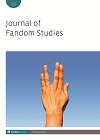
Full text loading...

In light of the growing body anti-fan studies, this article tries to fill the gap of empirical studies on Chinese anti-fandom by investigating the textual dislike of traffic stars – those who usually are good-looking and possess a huge fan base yet are perceived to lack good texts. This form of stardom has proliferated in China since its emergence in 2015, usually involving high traffic of fans, metadata orientation and mega publicity in the media. By drawing on one of Gray’s anti-fandom categories ‘bad object’, this article examines anti-fans’ discourses about the ‘badness’ of traffic stars. Using anti-fandom of Cai Xukun as a typical case, I present how anti-fans frame the ‘badness’ as due to attributes of both Cai himself (misalignment of achievements and talent, plagiarism, being unpatriotic, femininity, sexually suggestive performance and being a bad role model) and his stardom (capital operation by the culture industry). As such, we shall see how this anti-fandom takes on a critical perspective towards traffic stars. These attributes together constitute the site for ‘coalitional dislike’ towards Cai, and by extension traffic stardom in China.

Article metrics loading...

Full text loading...
References


Publication Date:
https://doi.org/10.1386/jfs_00062_1 Published content will be available immediately after check-out or when it is released in case of a pre-order. Please make sure to be logged in to see all available purchase options.